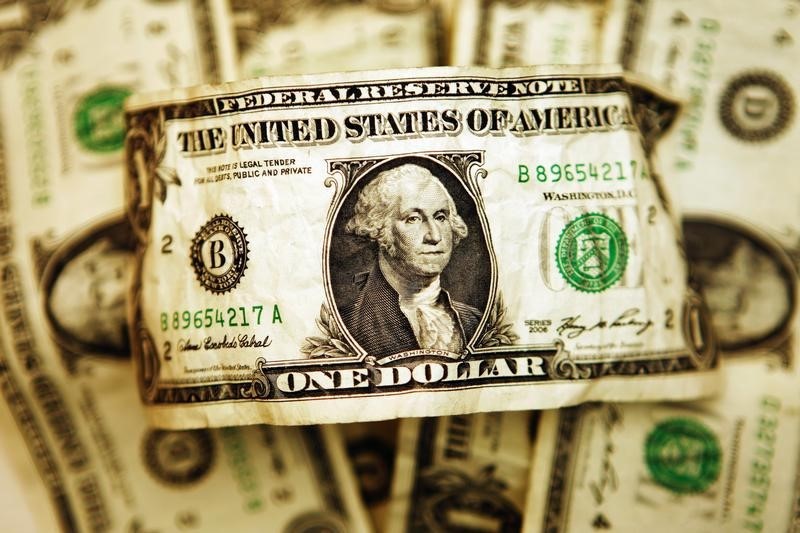* Graphic: World FX rates in 2020 https://tmsnrt.rs/2RBWI5E
* Historic collapse in oil futures
* Dollar to remain supported in long term
* FX markets adjust to shifts in global economic risks
By Stanley White
TOKYO, April 21 (Reuters) - The dollar resumed its climb against currencies of oil producers on Tuesday, as investors remained skittish after a historic plunge in U.S. crude futures to below zero and shied away from risk even as the benchmark bounced back.
Concerns about the health of North Korean leader Kim Jong Un following media reports that he was receiving treatment after undergoing a cardiovascular procedure also supported the dollar.
U.S. crude oil futures plunged into negative territory for the first time ever on Monday, dragged by a supply glut and sagging demand due to the coronavirus pandemic, though they managed to scrape back into positive territory early Tuesday.
"Oil is off its lows, but a lot of companies are going to get hit and companies could start to fail," said Shane Oliver, head of investment strategy and chief economist at AMP Capital Investors in Sydney.
"If share prices have a pullback, the dollar could see some gains as a safe haven. The only thing that's capping the dollar is the Federal Reserve has done more quantitative easing than anyone else."
Factory closures and travel curbs enforced to slow the pace of new infections have triggered a collapse in oil prices, which is drawing money from commodity currencies and other risk asset to the safety of dollar-denominated assets.
Against the Norwegian crown NOK= , the dollar rose 0.32% to 10.4834 after gaining 1.2% on Monday.
The greenback rose 0.27% to 24.1470 Mexican pesos MXN=D3 following a 1.3% jump on Monday.
The U.S. dollar steadied against the Canadian dollar CAD=EBS at C$1.4138 after hitting a two-week high on Monday.
The South Korean won KRW= tumbled more than 1% to 1,234.61 against the dollar after CNN reported that North Korea's Kim was in "grave danger" after surgery. in the South Korean government and the Chinese Communist Party refuted the media reports. West Texas Intermediate crude for May delivery CLc1 turned positive and traded at just below $2 per barrel in Asia, off a low of -$40 hit in New York trading.
The May contract expires on Tuesday. The more actively traded June contract CLc2 was up 7% at $21.86 a barrel. O/R
Investors have been unwinding long positions in front-month futures because U.S. storage facilities are nearly at capacity.
Energy prices are also falling because output cuts agreed last week by major oil producers have not offset a collapse in demand caused by the coronavirus pandemic.
The dollar rose to 0.9712 Swiss francs CHF=EBS as safe-haven flows continued to support the U.S. currency. Sterling GBP=D3 fell 0.25% to $1.2402.
The dollar steadied at 107.70 yen JPY=EBS
The euro EUR=EBS eased to $1.0844. Against the pound, the common currency was little changed at 87.33 pence EURGBP=D3 .
Asian equities followed Wall Street lower, with MSCI's broadest index of Asia-Pacific shares outside Japan .MIAPJ0000PUS and Nikkei .N225 down. MKTS/GLOB
DATA EYED
Data due later on Tuesday is expected to show German investor sentiment remained weak in April because of the coronavirus pandemic.
European Union officials will discuss on Thursday the bloc's response to the economic chaos caused by the virus crisis.
Members of the EU are struggling to reach consensus on how to financially support countries hardest hit but the virus, such as Italy and Spain. the EU fails to reach an agreement this week, there could be more downside risks for the euro, some analysts say.
As coronavirus infections show tentative signs of peaking in some places, countries are struggling to decide how to re-open their economies for business.
The New Zealand dollar NZD=D3 fell 0.8% to $0.5988.
Short-term investors quickly booked profits on the kiwi's gains on Monday after the country decided to next week ease some of the world's strictest lockdown measures taken to stop the spread of the virus. Australian dollar AUD=D3 fell to $0.6297 after data showed that 6% of all jobs in the country were lost in a brief period over March 14 to April 4 due to the virus.
